_11zon.jpg)
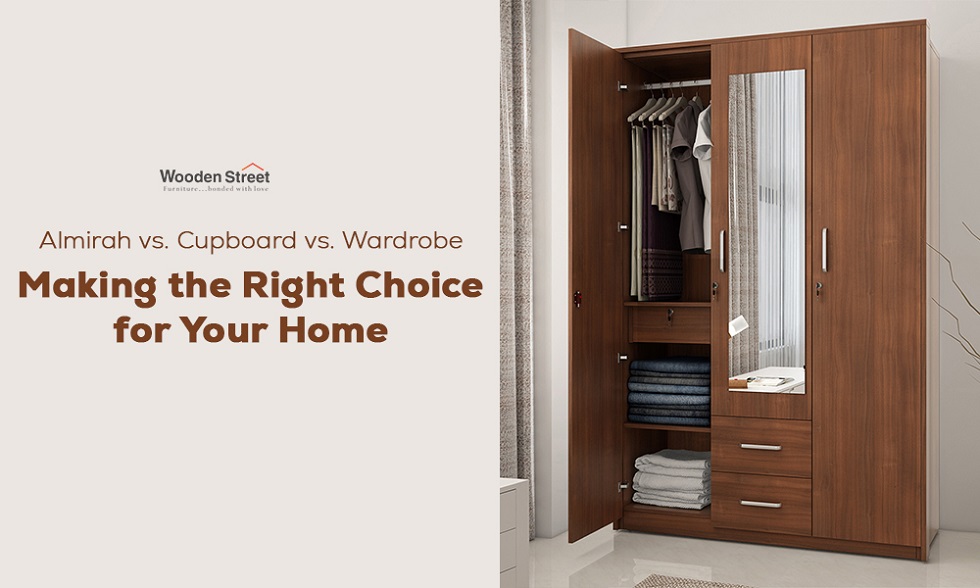
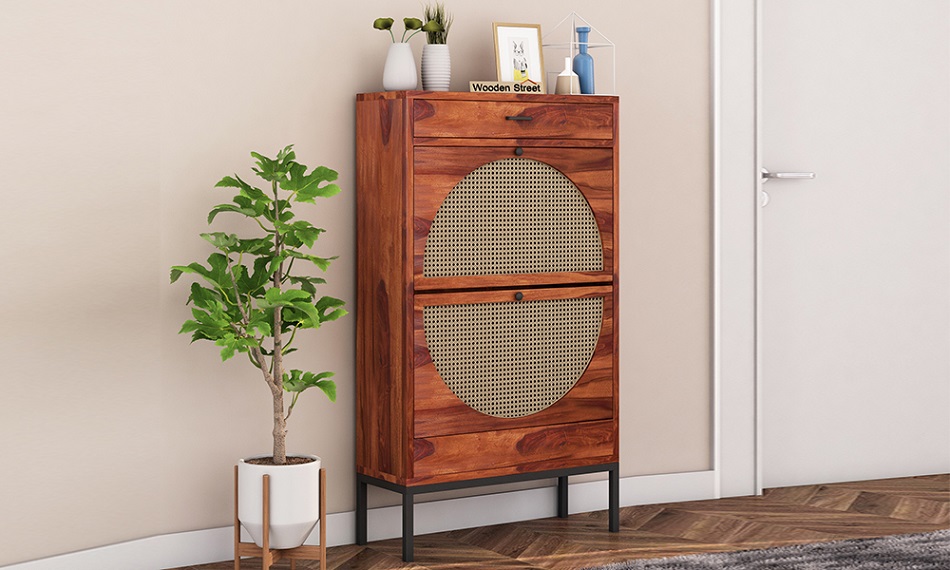
Confused about wardrobe sizes? This guide covers standard dimensions, measurements, and space planning tips to help you design a wardrobe that fits perfectly and maximizes storage.

Picture this: you’ve bought the most beautiful wardrobe, but just when it arrives, it is not able to get fit into your room! Either it’s quite tall for the ceiling, too wide for the wall, or simply doesn’t provide you with enough storage. Sounds familiar, right? You’re not alone here. Choosing the right wardrobe size is more than picking up a design you like. It’s knowing about the standard dimensions of a wardrobe and how they’ll work in your space.��
This guide is here to save you from that stress. We’re here to walk you through the standard wardrobe measurements, and even explore options such as the smallest wardrobe if you’re tight on space. Whether you’ve been planning about having a compact bedroom or want to design a luxurious walk-in, it is important to understand wardrobe with dimensions that will help you strike the perfect balance between style, function, as well as space.��
By the end, you won’t just know how to go for a wardrobe by size, but at the same time, you’ll also know how to pick the right wardrobe for your lifestyle.��
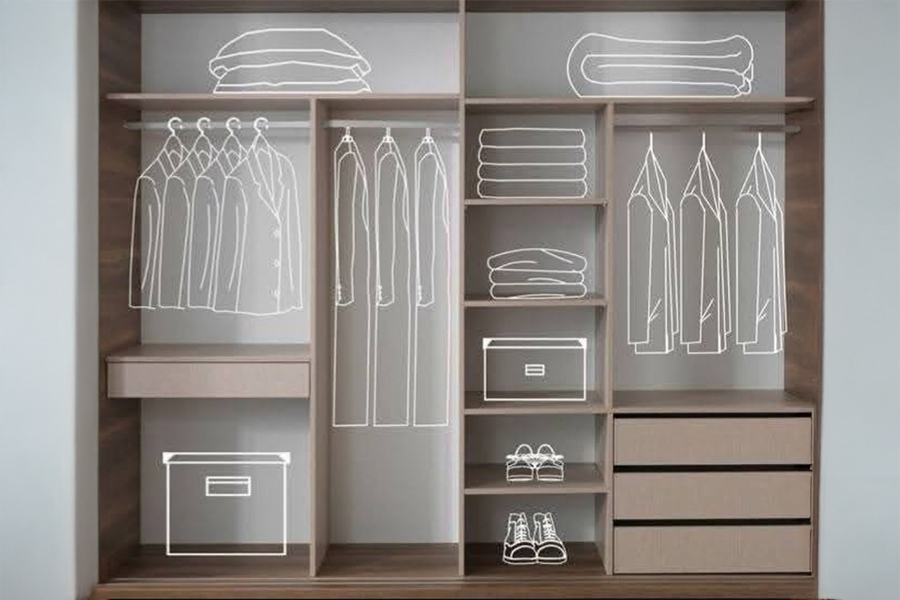
Wardrobes are more than just storage. They shape how your room looks and functions. The wrong size can make a room feel overcrowded, unbalanced, or simply impractical. Imagine that you have to keep on struggling with doors that don’t open fully or shelves not able to hold enough clothes? This sounds a little challenging and troublesome.��
That’s why using standard wardrobe measurements makes all the difference. They bring to you three key benefits:��
Usually, when we talk about wardrobes, they follow standard ranges for depth, height, and width, therefore keeping both accessibility and comfort in mind.��
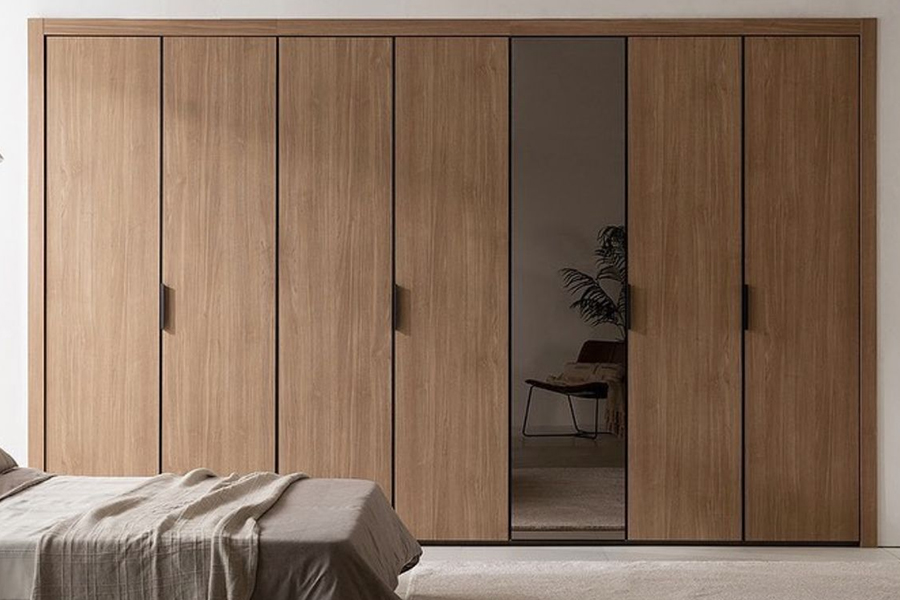
When it comes to planning about your wardrobe, size matters as much as design here. So, selecting the right dimensions makes sure that your furniture is stylish while being functional and space-efficient. Wardrobes do come in different styles but most follow certain standard sizes that make them a great add-on for everyday use.��
| Type of Wardrobe | Height | Width | Depth |
| Hinged / Swing | 7��8 ft | 3��4 ft | 2 ft |
| Sliding | 7��8 ft | 6��12 ft | 2 ft |
| Walk-in | 7��8 ft | 6��7 ft or more | 2 ft |
| Corner / L-shaped | 7��8 ft | Varies (typically 3��4 ft per wall side) | 2 ft |
| Modular | 7��8 ft | 2��3 ft per module (combined as needed) | 2 ft |
| Built-in / Fitted | 7��8 ft | Custom (wall-to-wall, varies by space) | 2 ft |
| Smallest / Kids�� | 4��5 ft | 2��3 ft | 1.5��2 ft |
��
As you can see, wardrobes differ widely. This all depends upon their type and purpose. A hinged wardrobe goes well in smaller rooms, while sliding wardrobes are useful for modern spaces where it is important to save floor clearance. Walk-ins and built-ins are perfect for larger rooms and give you more freedom in order to customize storage. On the other side, kids�� wardrobes or the smallest wardrobe options make the best use of compact spaces without the need to sacrifice on the part of usability or style.��
By having a little understanding about these standard sizes, you can confidently plan your interiors, avoid measurement mistakes, and select a wardrobe that perfectly balances storage, style, as well as comfort.��
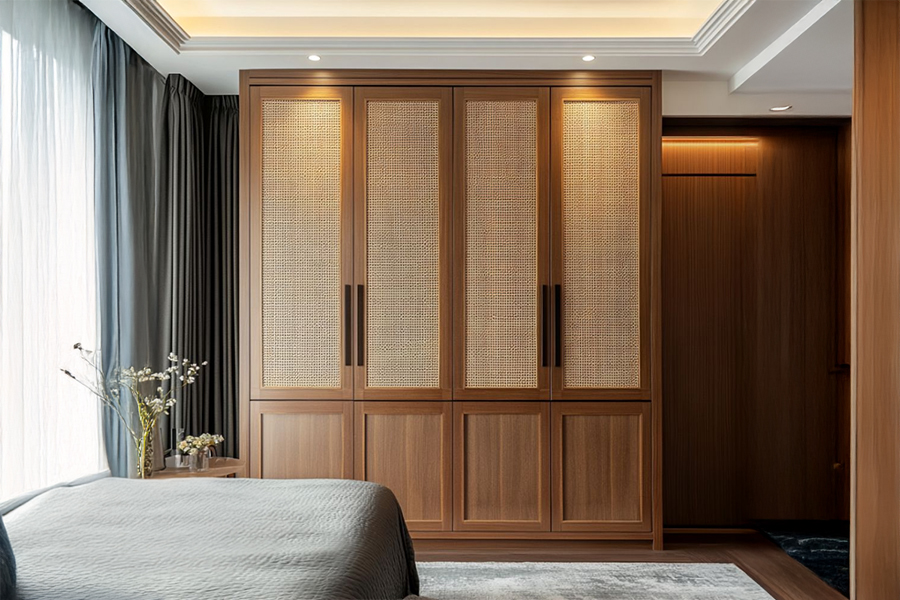
The hinged wardrobe, which is also known as the swing-door wardrobe, is the most traditional as well as commonly used style in homes. Its classic design makes it an all-round choice, but to make the most of it, knowing about the right dimensions is required.
For the doors, the width of each panel should be ideally between 1.5��2 ft (45��60 cm). This ensures smooth opening and closing of the wardrobe without the need to put in too much strain on the hinges or occupy any of your extra floor space.
Since swing doors need clearance so as to open fully, hinged wardrobes are best suited for larger rooms where there’s enough space available in front of the wardrobe. They work especially well in master bedrooms, guest rooms, or any space where traditional design and full visibility of the wardrobe interior are preferred.
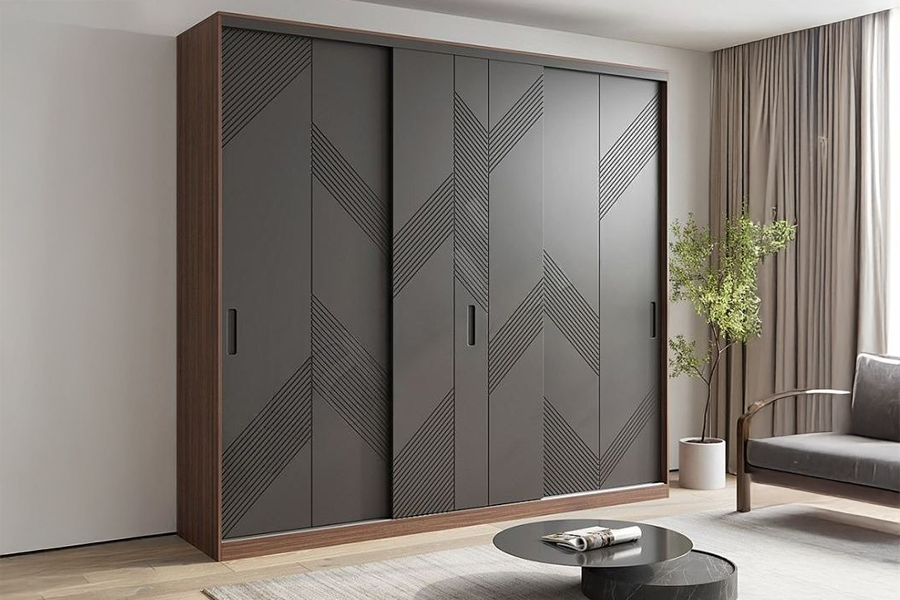
Sliding wardrobes are considered as a modern solution for homes where saving space is a priority. Since the door slides on tracks instead of swinging outward, they don’t need any kind of extra clearance in front, therefore making them perfect for small or present-time bedrooms.��
Minimum Space Requirements:
To ensure that there is smooth sliding, you’ll need at least 6 ft (183 cm) of wall length for a basic two-door unit. Larger layouts may require more width but still won’t eat into floor clearance.��
Layout Types:
Standard Clearance for Comfort:
Even though sliding wardrobes help you in saving a lot of your space, try to leave at least 3 ft (90 cm) of clearance in front of the wardrobe for easy movement as well as accessibility so that you can easily yet comfortably open drawers, pull out shelves, and access your belongings.��
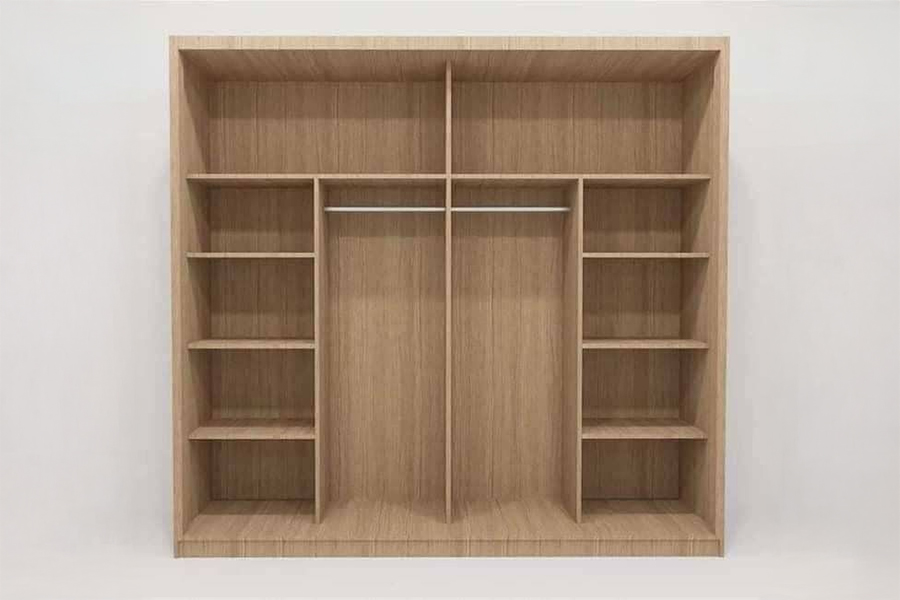
The inside of a wardrobe is said to be as important as the outside. Well-planned internal wardrobe dimensions make your furniture more useful and make sure that every item has its place.��
Drawers, Shelves & Hanging Space
For shirts, tops, and jackets �� 40��42 in. (100��107 cm) vertical space.
For long garments such as dresses or coats �� 66��72 in. (167��183 cm)
Shoe Rack Dimensions
Getting the right internal storage in the wardrobe is only one part of the design. So, if you want a wardrobe that is comfortable and practical to use, you also will have to pay attention to its overall depth, height, as well as width. These external dimensions will define how your wardrobe fits perfectly into the room and how easy it will be when used on an everyday basis.��
Depth determines how comfortable your wardrobe is at the time of its usage.
Height sets the tone for usability along with storage.
Width largely depends on the number of doors and the available size of the room.
Pro tip: Always match the width of the wardrobe to your wall size, because too small looks totally out of proportion, while too wide can overburden the overall look and feel of the room.
��
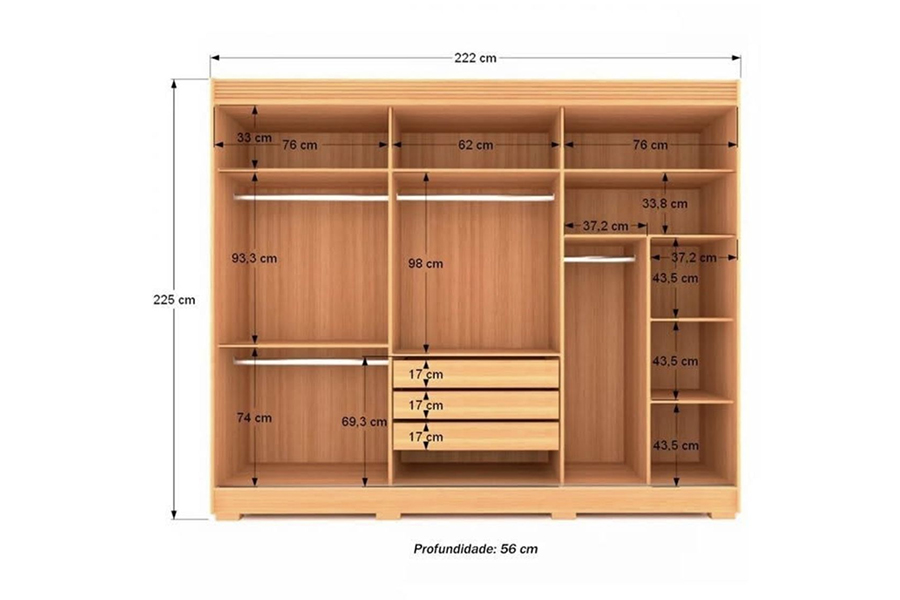
Not everyone measures furniture in the same way. While some countries use feet or inches, others may go for calculating it on the basis of centimeters. To make this guide more useful, below is a simple chart that shows the wardrobe standard size in inches, along with quick conversions between cm, inches, and feet.��
| Dimension | Centimeters (cm) | Inches (in) | Feet (ft) |
| Standard Height Range | 213 �� 243 cm | 84 �� 96 in | 7 �� 8 ft |
| Standard Depth (Hanging) | 60 cm | 24 in | 2 ft |
| Depth (Folded clothes) | 45 �� 50 cm | 18 �� 20 in | 1.5 �� 1.7 ft |
| Single-Door Wardrobe Width | 60 �� 76 cm | 24 �� 30 in | 2 �� 2.5 ft |
| Double-Door Width | 91 �� 152 cm | 36 �� 60 in | 3 �� 5 ft |
| Multi-Door Width | 183 cm | 72 in | 6 ft |
��
These quick conversions help global readers understand about wardrobe dimensions in the unit they’re most comfortable with, whether you’re shopping online or planning a custom design with your local carpenter.��

When it comes to designing your storage, one size can not be taken into consideration to fit into all. The key here to selecting a wardrobe is matching the same to your room dimensions, way of living, as well as storage needs. That’s where planning your wardrobe by size becomes essential.��
Room Dimensions & Wardrobe Type
The size of the room is the main factor in determining the kind of wardrobe you want to�� accommodate in it. In case of small rooms, it works best with hinged wardrobes and for medium-sized rooms, it adapts perfectly with sliding wardrobes, while larger spaces can easily house modular or walk-in wardrobes. Choosing the right type keeps your interiors balanced as well as functional.��
Family Size vs. Wardrobe Capacity
The requirement for storage increases along with the number of family members. A single person or guest room may only need a compact wardrobe, while couples go for double-door or sliding options. For families, modular or walk-in wardrobes provide separate compartments, thus making organization simpler and ensuring that everyone’s belongings have their proper dedicated space.��
Common Off-the-Shelf Options
Ready-made wardrobes are available in standard sizes that are usually 2��6 ft in width, 7��8 ft in height, and 1.5��2 ft in depth. They’re considered as convenient, affordable, as well as easy to install, hence becoming a great option for renters or homeowners who need practical storage without having to wait for custom carpentry work.��
Pros and Cons: Off-the-Shelf vs. Custom
Off-the-shelf wardrobes are budget-friendly and widely available but may not fully utilize the dimensions of your room. On the other hand, custom wardrobes are designed specifically for your space as well as needs, offering you with maximum efficiency. However, they require more time, effort, and investment as compared to standard ready-made options.��
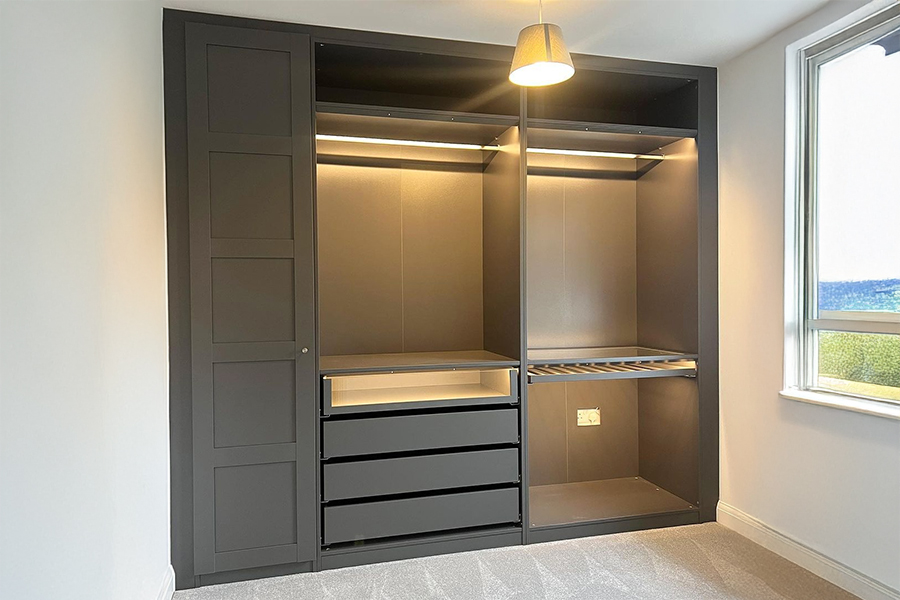
A wardrobe is not only about size. It is also about how smartly you use the available space. The following are some practical tips so as to make the most out of every inch:
Loft Storage
Lofts are best where you can store all your seasonal items, extra bedding, or luggage that are not being used everyday. When you increase the height of your wardrobe up to the ceiling, you can free up the main sections for your daily use, while keeping heavy or rarely needed items neatly tucked away.��
Pull-Out Racks
Pull-out racks for keeping trousers, ties, and other accessories that help you in maximising vertical space while keeping things visible and quite easy to access. They prevent clutter to get accummulated inside shelves and make organization smooth. A small section for these racks can transform the efficiency of the wardrobe without increasing overall size.��
Adjustable Shelving
Shelves that come with adjustable heights allow you flexibility in terms of whenever you want to make any changes to your storage needs. Whether you want to keep your folded clothes, handbags, or linens, these adjustable shelves make sure that you don’t have to waste vertical space. This feature is particularly helpful in modular wardrobes, where different sections can be customized as and when required over time.��
Transparent Drawers & Labels
Transparent drawers save your time by enabling you to quickly see what’s inside, while labels help everyone in the family to keep their respective things in a neat and well-ordered manner. Together, they help you in reducing clutter, preventing any misplacement, and making the wardrobe much easier to maintain.��
Summing up, we can say that the right wardrobe is all about bringing style and utility to your space. Plus, it is also about understanding standard wardrobe measurements and planning of smart storage solutions that best fit into your way of living. As we have seen above, from hinged and sliding wardrobes to loft storage and modular designs, every option has its own advantages.
By keeping the right standard wardrobe size in mind and maximizing space with including features such as pull-out racks and adjustable shelving, you can create a wardrobe that’s functional as well as stylish.��
Now it’s your turn—what kind of wardrobe works best for your space? Do you prefer the classic hinged style, a beautiful sliding one, or a custom modular design? Share your thoughts and experiences in the comments below. We’d love to hear from you!
We will be back with the next blog soon; till then, stay tuned!
Image Source: Pinterest, Google, and Wooden Street
Related Blogs
ŷ�����ֹٷ�app 10 Elegant Wardrobe Colour Combinations For Your Bedroom
Almirah vs. Cupboard vs. Wardrobe: Making the Right Choice for Your Home
Wardrobe Direction As per Vastu - 6 Tips on Maintaining Vastu
QHow tall should a wardrobe be?
AA standard wardrobe is usually 7��8 ft (213��243 cm) tall, which fits most home ceilings. For extra storage, you can extend it up to the ceiling with lofts to keep seasonal or bulky items organized.
QWhat is the minimum size for a walk-in closet?
AA functional walk-in closet should be at least 6 ft by 6 ft in size. This allows enough clearance for movement, shelving, and hanging space. Larger layouts, like 7×10 ft, offer more comfort and flexibility.
QHow do I choose the right wardrobe size for my room?
AConsider your room’s dimensions, storage needs, and family size. Small rooms suit compact hinged wardrobes, medium spaces benefit from sliding wardrobes, and large bedrooms work best with walk-in or modular wardrobes tailored to maximize storag
QHow wide is a standard wardrobe door?
AFor smooth operation, a standard hinged wardrobe door is 1.5��2 ft (45��60 cm) wide. This ensures it opens comfortably without straining the hinges or occupying too much floor space in front of the wardrobe.
QWhat factors should be considered when determining wardrobe depth and design?
ADepth depends on what you’ll store. For hanging clothes, 24 in. (60 cm) is ideal, while folded items need 18��20 in. (45��50 cm). Consider accessories, room space, and ergonomics when finalizing wardrobe depth and design.
Articles you will love to read